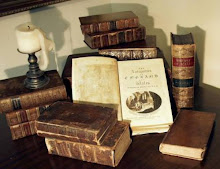Life, the narrator tells us, is a constant mixture of genres. He is writing an anti-Soviet satire while simultaneously recording legends and myths of village life, and this novel is an autobiographical product of it all. From the first page of this book, we were reminded of the fiction of Milan Kundera, whose novels are less about characters and events than they are about the author writing the novel about those characters and events. The Woman Who Waited purports to be about a woman who's been waiting thirty years for the man she loves to return from the war; it is more about the narrator who writes about her.
Vera waits for the man she loves because she is convinced he will return; otherwise, love will mean nothing more than the satisfaction of a carnal instinct. She sits at the end of a bench in her house where she can look out the window across the fields to the crossroads where she could see anyone approaching. She waits for the man she loves, and she watches for him too, and at times a dark figure appears and then disappears again. She waits for him and sees him in her mind the way Heathcliff did Cathy.
Here is what Makine does best, writing what the narrator calls "luminous moments rescued from time," something very similar to Proust's privileged moment:
A very thin layer of ice had formed at the bottom of the well. (I had just caught up with Vera, who was drawing water.) As the ice broke, it sounded like a harpsichord. We looked at one another. We were each about to remark on the beauty of this tinkling sound, then thought better of it. The resonance of the harpsichord had faded into the radiance of the air, it blended with the wistfully repeated notes of an oriole, with the scent of a wood fire coming from the nearby izba. The beauty of that moment was quite simply becoming our life.
The narrator and Vera are drawn to one another by the sharing of these moments. She finally gives herself to him, and their encounter ends abruptly at the sound of a door or window. She rushes to the window to watch outside for the man she loves, perhaps fearful that she has waited for thirty years and now, when she finally allows herself the embrace of another, the man she loves returns to find she has stopped waiting for him.
First the narrator feels pride at being able to seduce this woman so intent on waiting for another. Then he feels shame. Finally, he fears that he will now be the center of Vera's life, that she will cling to him, and that he will owe it to her. And then she shows him the way out of town. He has not taken the place of the man she loves, and he has not released her from waiting. Instead, Vera has learned that the emotion between them was an illusion of love, and that the ghostly figure she sees outside, the dream she waits for, is the reality of love. The narrator has renewed her ability to wait once more, forever more, for the man she loves.
There is great emphasis in this novel on time. In the village of Mirnoe, the narrator discovers a floating, suspended time. There is a collective forgetting of the past. Vera, however, remembers the past exclusively--it is the present and the future that she forgets. And each evening the narrator prepares to leave the village, but each morning he stays, as if replaying the same day over and over. He finds time is completely absent from the village, history has been eradicated, and all that remains is the essence of things.
The only thing more historically founded than Soviet life is Christianity. The ten days that shook the world, the rise of the proletariat, the dissolution of the state all happen, or were meant to happen, in historical time. Vera lives, physically and emotionally, in a place beyond time. And even though thirty years pass while she waits, the essence of life remains. The Woman Who Waited is the narrator's satire, ridiculing the historical failure that is Soviet life.
This was our first experience reading Makine, and it was enjoyable. To the comparisons with Kundera and Proust, we can add Nabokov and Kadare. Indeed, there seems to be an impressive strain running through eastern European fiction of illuminating a privileged moment, of uncovering the essence of life that most American fiction lacks. We would certainly recommend The Woman Who Waited. It doesn't matter if you already know the plot, the enjoyment comes in sharing the experience of the luminous moments.
...cross-posted at Slaves of Golconda.







